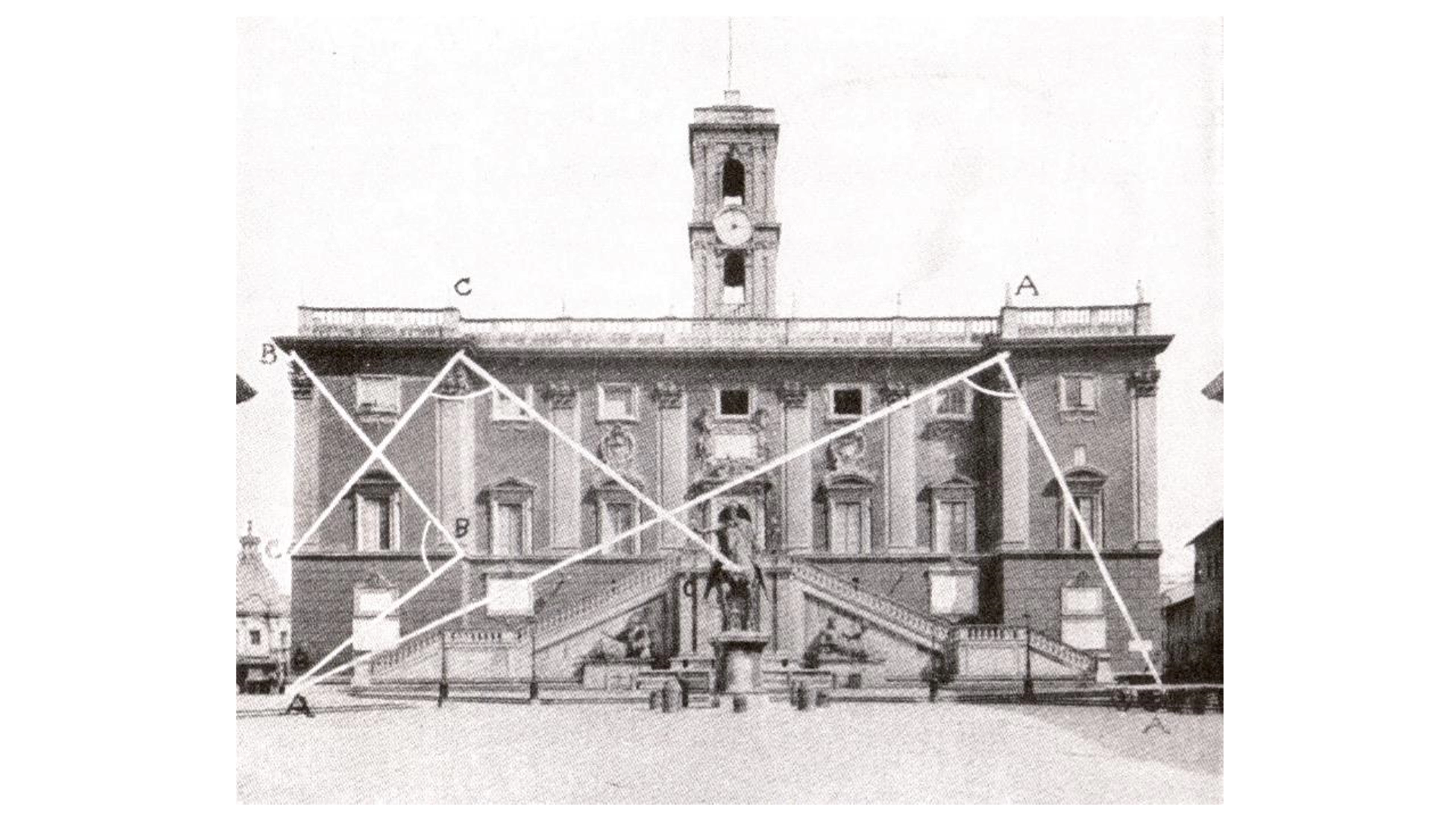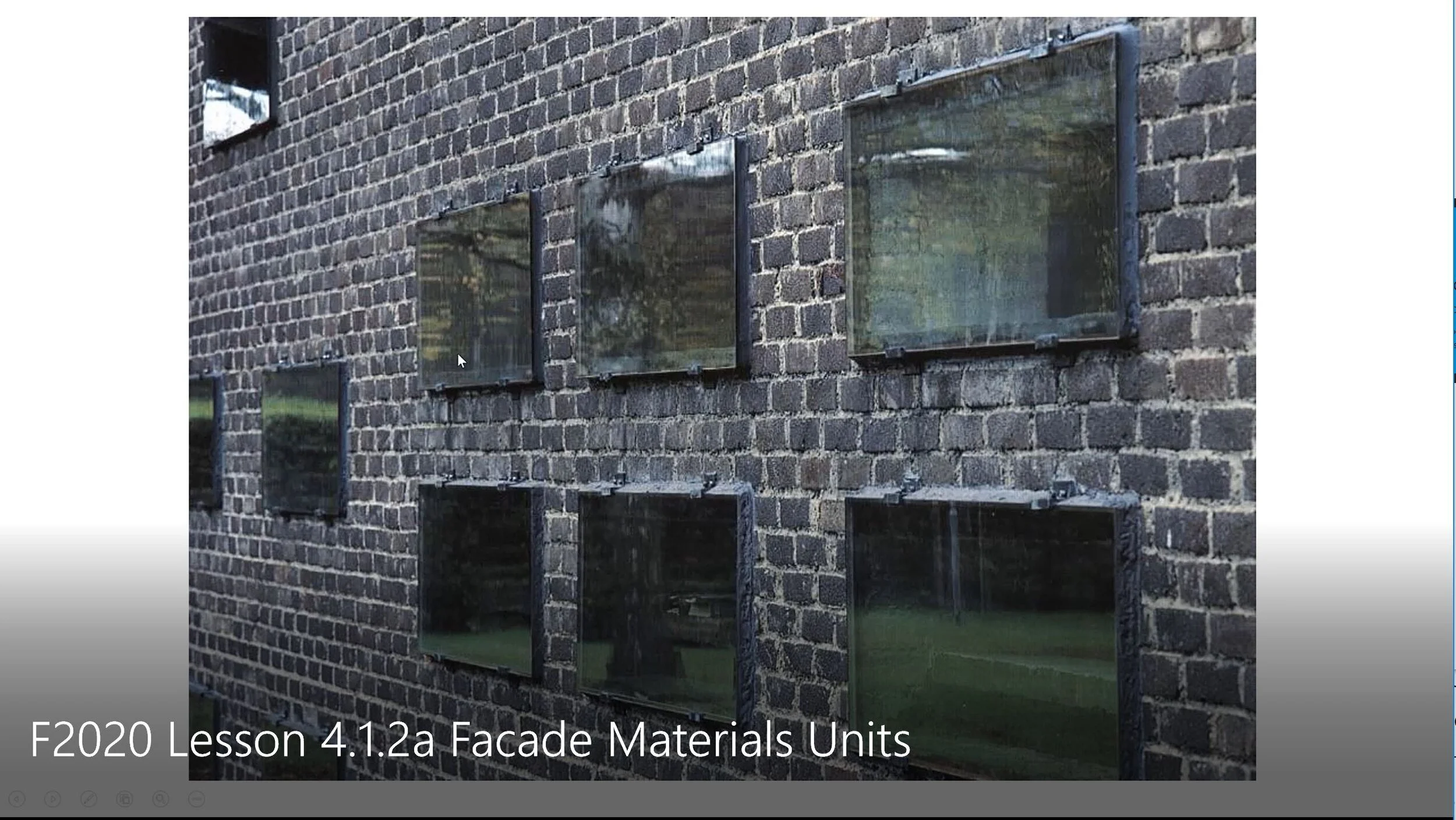4.1 Facade System Design: Materials, Assemblies + Details
4.1.0 Facade Lesson Series Introduction
Mick Kennedy
This video will introduce the next series of course lessons on facade systems: their design, material opportunities and construction options. It will include an introduction to window types, including curtain wall and window wall systems. Along with this we will present information on glass…as a material, facade component with a focus on glass selection and performance for aesthetics and building environmental quality.
4.1.1 Facade Compositional Strategies
Mick Kennedy
This Lesson will introduce a range of compositional strategies to guide the designer in developing and integrating facade design within a holistic building design considering both exterior and interior conditions.
4.1.2a Materials Selection-Units + Assemblies 4.1.2b Facade Planes + Panel Systems
Mick Kennedy
This Lesson in two parts will introduce the wide (very wide) range of material options available to the façade designer. While no means exhaustive, the focus of the Lesson will be on types of materials in relationship to their size and scale and thus to larger façade compositional strategies, as well as to their means of assembly in a wall system: eg. stacking, hanging, framing, embedding, troweling, smoothing, shaping.
Examples from a wide range of regions, building cultures, climates, and levels of required craft utilizing both digital and traditional or vernacular manual methods will be presented. This will include materials and methods outside the canonical architectural sources. The Lesson will foreground how both digitally advanced and manual analog assembly processes might be hybridized to produce an unanticipated richness in design that simultaneously validates the invaluable contributions of those often neglected or invisible workers who are our real co-collaborators in translating design into architecture.
The Lesson will highlight the trains of material sourcing and production to emphasize the consequences of our design choices and actions in manifesting a more sustainable and equitable professional ethic.
Upon understanding the fundamentals of materials, processing and assemblies, students will be encouraged to explore, adapt and alter existing material and assembly procedures for new applications in their studio work.
4.1.2b builds on 4.1.2a, with a focus on the façade materials and assembly systems that general are fabricated, assembled and installed in sheet or panel formats. As in Lesson 4.1.2a the lesson will present details of connections, erection tolerances and adjustments to help guide your own façade system design and the development in your studio comprehensive wall section drawings.
4.1.3 Facade Construction System Selection
Mick Kennedy
Following on our lessons dedicated to façade compositional strategies and materials selection and assembly opportunities, this lesson will look closer at the construction systems by which these façade materials are integrated into an overall building construction and structural systems. We will look in particular at window wall and curtain wall systems, their specific design possibilities and applications and selected details used in their construction and integration with other façade materials.
4.1.4a Window Types and Glazing Design + Performance 4.1.4b Glazing Selection
Mick Kennedy
This Lesson will present an overview of the range of design considerations around the broad topic of a “window”. What makes a window? How does a designer consider the design and performance characteristics of a window from the interior as well as from the exterior? The lesson will present a range of options for window typologies, framing systems and integration into façade material systems and wall section development.
This Lesson will present an overview of the multitude of glazing options available to the architect. It will introduce you to the range of aesthetic and performance criteria to empower you to make informed selections of glazing and understand how to coordinate these with your façade framing systems in “punched opening”, window wall and curtain wall applications.
We will review glazing manufacturing sites to review how glass options are organized by their visual and performance characteristics.
The lesson will also highlight recent developments in fire-rated glass systems which are already proving to be some of the most exciting developments in architectural space design and performance.
4.1.6 Supplemental Lesson: Special Facade Components + Details
Mick Kennedy
This supplemental (and optional) lesson will look more closely at a range of particular façade conditions: parapets, overhangs, soffits, corners and offer examples of design solutions that address important design situations of transitions, seams, joints, and transfers. The lesson will look closely at detail drawings to highlight how material, assemble, thermal and moisture control concerns are addressed.
There is no Learning Check associated with this supplemental and optional Lesson.
This Lesson is a work-in-progress without a recorded video. There is a pdf version of the Lesson linked on the 4.1.6 page.
4.1.7 Supplemental Lesson: Walkable Roofs
Mick Kennedy
This supplemental (and optional) lesson will look more closely at the design and detailing of walkable roof systems including paving surfaces and the integration of their thermal and water moisture control solutions with that of the entire building envelope system. These walkable roof systems are analogous, if not specifically applicable, to other design situations such as terraces or plazas over underground building or parking space.
There is no Learning Check associated with this supplemental and optional Lesson.
This Lesson is a stub work-in-progress. There is a pdf version of the Lesson on the 4.1.7 page. It will be updated shortly.





